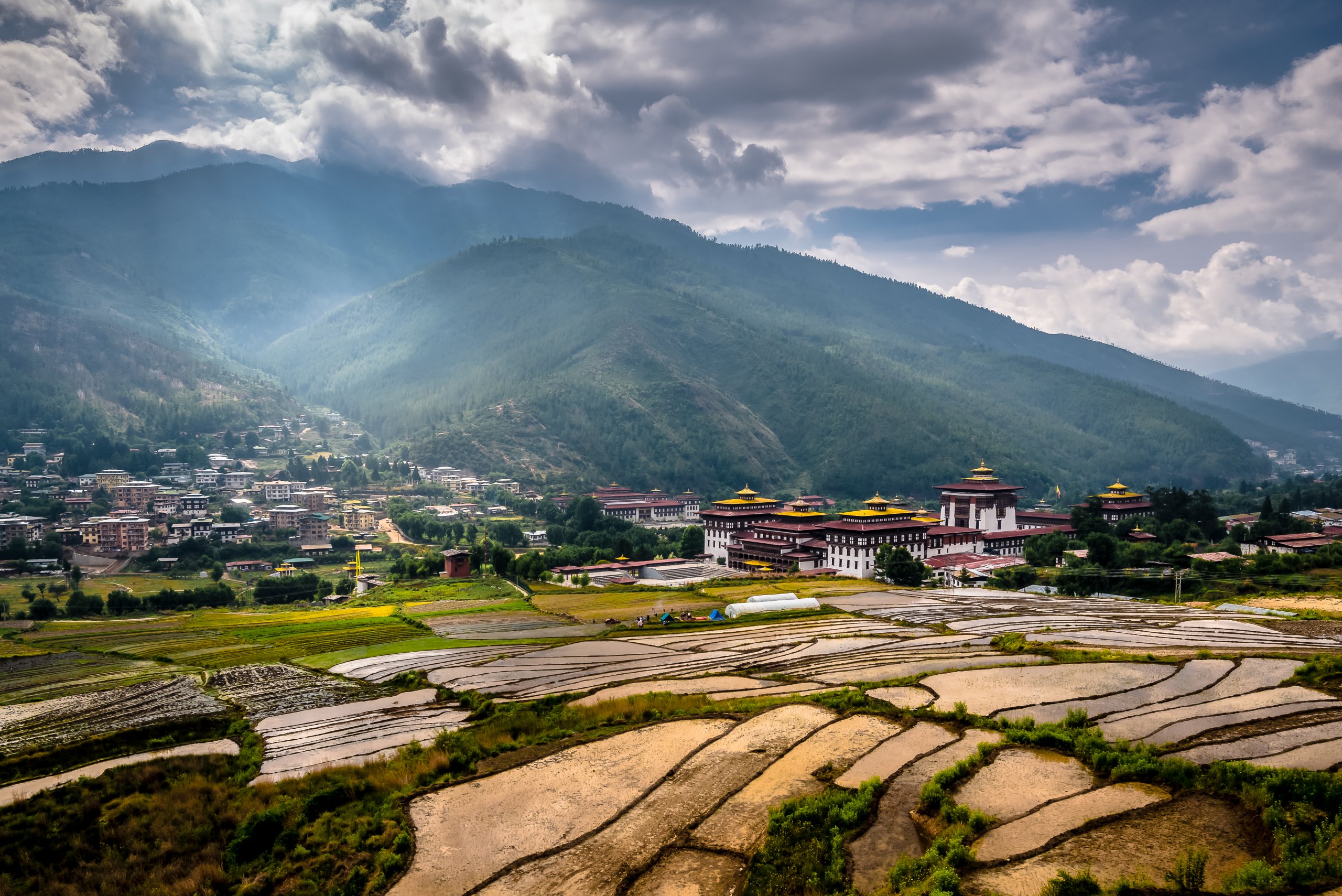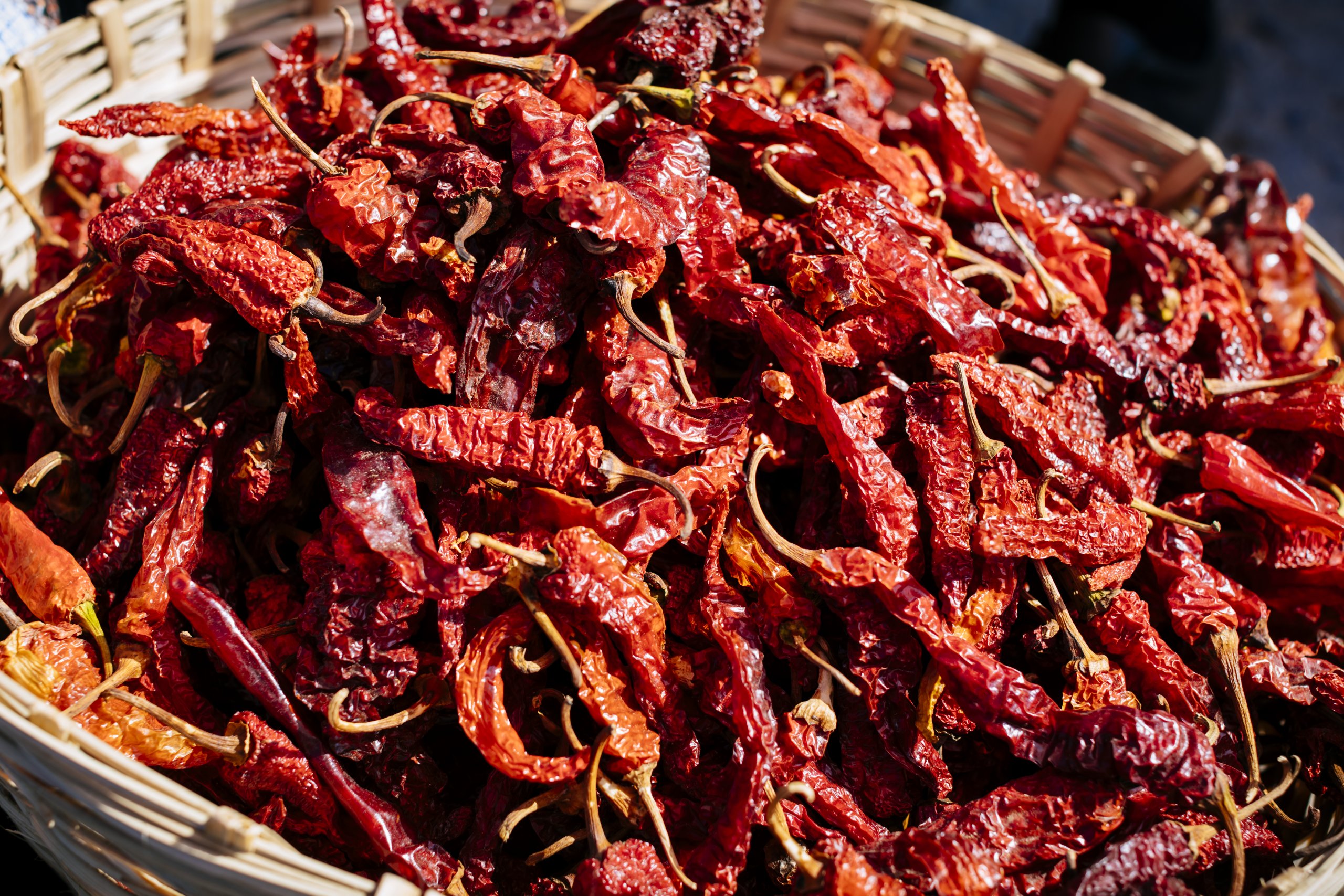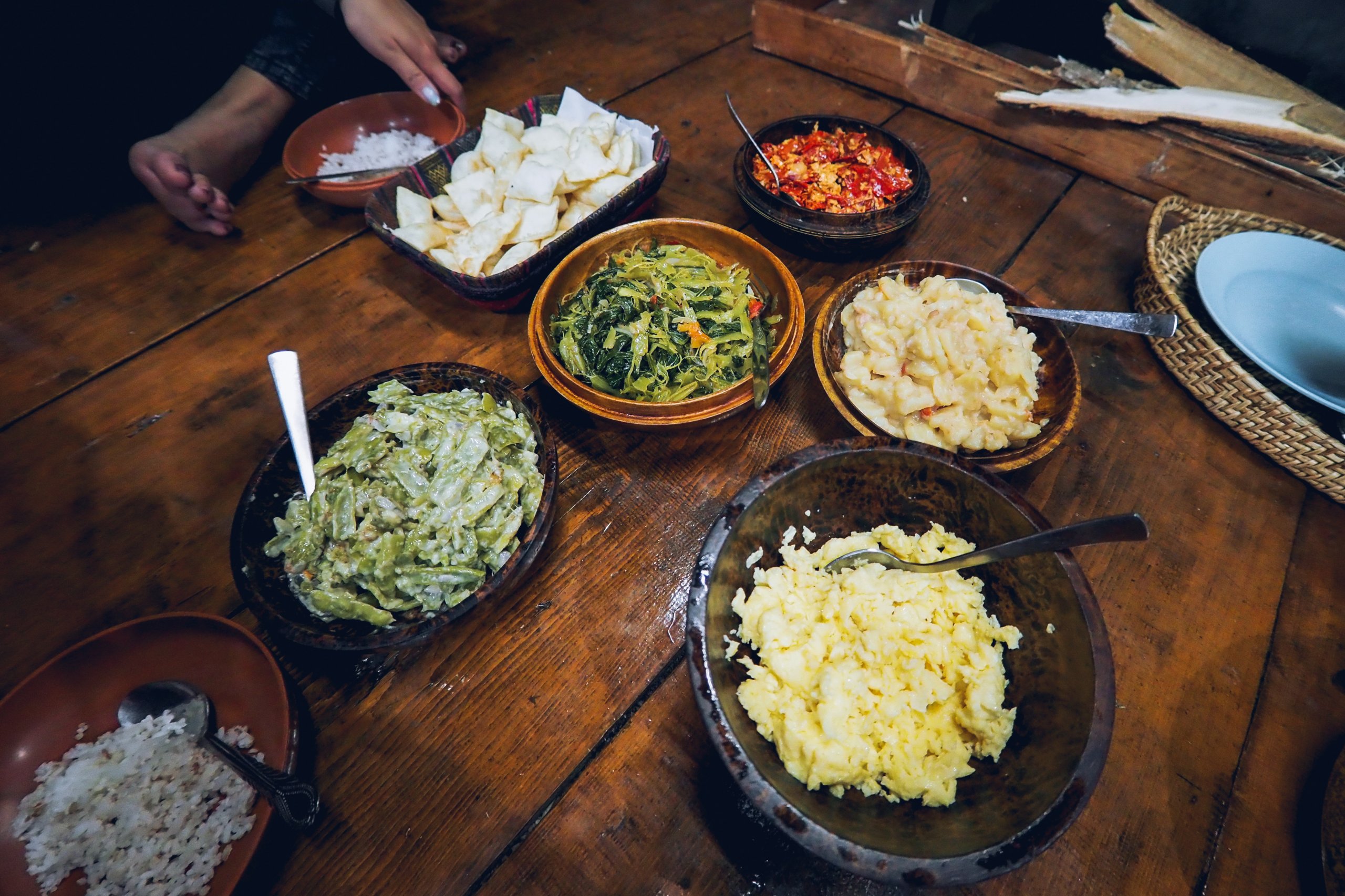Bhutan lies at the edge of the Eastern region of the Himalayas. Well known for being a destination where Buddhists hike to the top of steep mountain ranges to worship at monasteries like the Paro Taktsang, Bhutan is more than a pilgrimage site. Its location in South Central Asia and proximity to the Himalayas offers a unique agricultural climate, which produces crops that create one-of-a-kind dishes you can only find in Bhutan.

A movement to improve Bhutan’s agriculture industry has increased the abundance of fresh vegetables, fruits, and herbs. New methods of farming, incentives for small-scale farm owners, and the increased support and protection for rural communities are all measures in place to encourage sustainable farming for local Bhutanese. These new measures, combined with Bhutan’s strict practice of abstaining from harsh chemicals and fertilizers, contribute to providing fresh ingredients that are then incorporated into authentic dishes

Bhutanese farms grow rice, potatoes, corn, apples, and citrus, as well as a variety of spices native to the region like cardamom and nutmeg. The emphasis on revitalizing Bhutan’s agricultural industry gives local farmers and restaurant owners a chance to have a reliable source of fresh ingredients. In turn, these ingredients are then used to create unique dishes that are unlike any other place in the Himalayas and South Central Asia. Bhutan’s national dish, ema datshi, is a simple stew, ema meaning chili and datshi meaning cheese, made with a variety of chilies, which in Bhutan are used more generously like a vegetable rather than a garnish. The stew is then topped with fresh yak cheese or cow cheese, and oftentimes cooked with garlic, onion, and tomatoes. Ema Datshi can be enjoyed on its own, or with a heaping serving of another Bhutanese favorite, red rice.


Momo Corner
Locals rate Momo Corner as the best place for a quick lunch. Momos are steamed dumplings filled with meat and vegetables, seasoned with herbs and intricately wrapped in a layer of dough. In Bhutan, momos are typically filled with native yak, although oftentimes you can find beef or cheese momos.
At Momo Corner, located in Bhutan’s capital of Thimphu, these steamed treats are made to order, and always served fresh with a side of chili oil for dipping.

Babesa Village Restaurant
Babesa Village Restaurant is located in Bhutan’s capital city of Thimphu, housed in a 600-year-old home. The dining experience at Babesa reflects the centuries-old home where guests sit on cushions set at the table on the floor. The rustic interiors contribute to an atmosphere ideal for enjoying authentic Bhutanese food. Here, a meal starts with a cup of suja butter tea, followed by a few hearty staples. Dried beef is a local favorite, and is the preferred way to preserve meat when temperatures get too cold in the mountain region. Another dish served often is beef curry and dried parsnip leaf.

Tiger’s Nest Café
On our way up to Tiger’s Nest, the arduous and muscle-fatigue causing hike leading to the Paro Taktsang monastery, we found ourselves, in addition to fearing that we may never complete the hike, hungry for local cuisine.
Thankfully, on the journey to the peaks of Tiger’s Nest sits Tiger’s Nest Café. The wooden pagoda-style restaurant is perfectly built into the mountain structure and serves as both a well-deserved rest stop and a place to indulge in a plate of red rice, koka (noodles), greens, potatoes, and soup. This meal will no doubt sustain you as you continue on your journey.

Paro Vegetable Market
In the heart of Bhutan’s Paro region, the weekend Paro Vegetable Market is a welcomed attraction. Farmers and artisans huddle into a canopy-covered stall and display seasonal vegetables, homemade cheese, and dried meats—all components of a traditional Bhutanese meal. The vegetable market is small but full of baskets of fresh fruits and vegetables to peruse and sample. The market is the best way to get acquainted with the flavors and smells of Bhutanese cuisine.